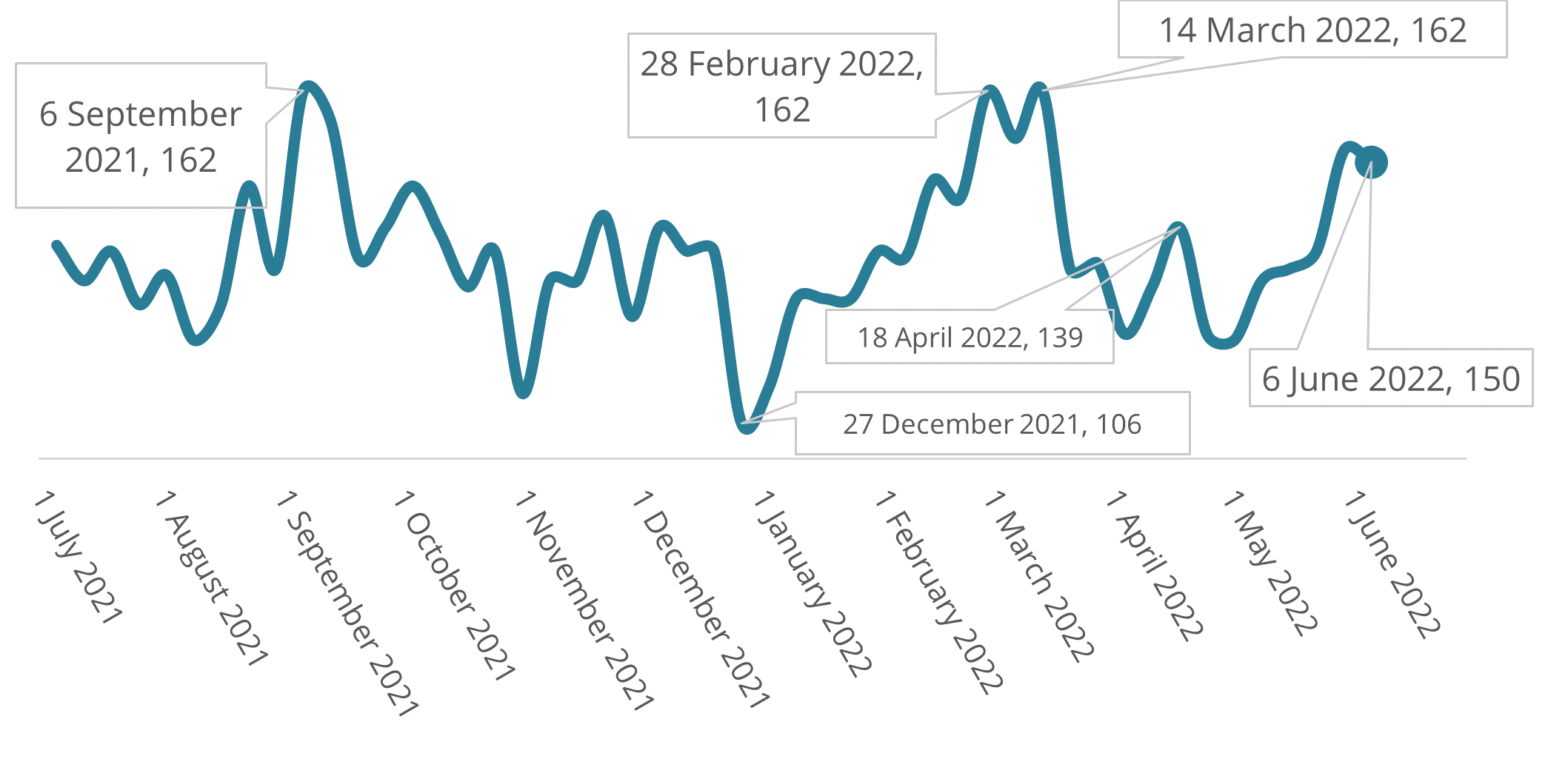Rain and storms
348 injury hospitalisations and 77 deaths related to extreme rain or storms were identified in the 10-year periods analysed in this report (Figure 1, Figure 2).
Rain and storm events are often interrelated. They include thunderstorms, cyclones and heavy or prolonged rainfall, which can lead to flooding and landslides.
More frequent intense rainfall events increase the risk of floods in urban areas owing to large areas of non-permeable surfaces. In less urban areas, extreme multi-day rainfall is usually needed to cause flooding.
Intense or prolonged rainfall, floods and storms can cause the following types of acute injuries (CDC 2020; Healthy WA 2022):
- drowning
- falls due to more slippery surfaces or increased trip hazards
- contact with objects such as floating debris, submerged objects, trees or wind-borne objects (Way & Balogh 2022)
- bites and stings from displaced animals such as snakes
- burns, cardiac arrest, and respiratory complications resulting from lightning strikes
- exposure to electric current if powerlines or electronic devices are water-affected
- injuries caused by transport-related accidents, including on land or water.
While further injuries may occur subsequent to displacement, clean up activity and environmental upheaval caused by severe rains or storms, they are challenging to identify within administrative hospital and mortality datasets.
Peden et al. (2017) studied flood events in Australia finding that drowning is the leading cause of death in floods. Between 2002 to 2012, there were 129 (0.6 per 100,000 people) drowning deaths involving river flooding. Males, children, and people living in remote and very remote locations are at increased risk.
Severe flash flooding in Queensland in 2011–12 led to the deaths of 33 people.
In Australia from 2001–2017 there were 96 vehicle-related flood fatalities, which represented 50% of deaths related to flooding. Vehicle-related flood fatalities occurred mostly in NSW and Queensland, and demonstrate a seasonal peak in January. 87% occurred on creek crossings, bridges or causeways (Ahmed 2020).
2022 Flooding in Eastern Australia
In 2021–22, there were 60 rain and storm-related injury hospitalisations, which is:
- the highest number for any year out of the 10 years examined
- 3 times the number in the previous year, and 1.9 times the yearly average over the 9 years before.
The Northern Rivers region of New South Wales was one of the areas hit hardest by the 2022 floods. By looking at total week-to-week injury admissions to hospitals within the affected area, we can identify an increase in admissions for the 3-week period in which flood levels peaked (Figure 12). Deaths data relating to widespread flooding in 2022 was not available at time of reporting.
Figure 12: Number of hospital admissions for injuries in the Northern Rivers region spiked during major flood events

Notes:
Data is presented by week of admission, from July 2021 to June 2022, from hospitals within the Northern Rivers region of NSW.
Source: AIHW National Hospital Morbidity Database.
Road conditions
Rowland et al. (2007) outlined how poor weather conditions increase road transport accidents, for example:
- Rainfall, storms, snow and ice can reduce visibility and road friction
- Rain following a dry spell can create slippery road surfaces due to a preceding build-up of oil and grime
- Storms and floods may damage road infrastructure.
Transport accidents are often multifactorial and determining causes can be challenging. Other than road conditions, factors that can contribute to a crash include fatigue, speed, phone use or consumption of alcohol or drugs. Rowland et al. (2007) reported that rain and wet roads contributed to (but were not the only factor in) 15% of road deaths nationally (2004), 20% of road deaths in New South Wales (2005), and 16% in Victoria (2001–2005).
Across three states during 2016-2020, considering run-off road crashes with casualties (BITRE, 2022):
- more than 10% occurred when it was raining
- around 20% occurred on wet or slippery roads
Information published by Transport for NSW (2021) indicates that the number of road accidents in NSW where it was raining or overcast or where the road surface was slippery have increased since 2019, while the overall number of accidents has decreased.
Ahmed MA, Haynes K and Taylor M (2020) Vehicle-related flood fatalities in Australia 2001-2017, Journal of Flood Risk Management, 13(3).
Bureau of Infrastructure and Transport Research Economics (BITRE) (2022). Run-off road crashes in Australia, Information Sheet 112, BITRE, Canberra.
CDC (Centres for Disease Control and Prevention) (2020) Natural Disasters and Severe Weather, CDC, USA Government, accessed 5 April 2022.
Healthy WA (2022) Recovering after the flood – clean-up for householders, Department of Health, Government of Western Australia, accessed 5 April 2022. https://www.healthywa.wa.gov.au/Articles/N_R/Recovering-after-the-flood-clean-up-information-for-householders.
Peden AE, Franklin RC, Leggat P and Aitken P (2017) Causal Pathways of Flood Related River Drowning Deaths in Australia, PLOS Currents Disasters, 1:1–24.
Rowland B, Davey J, Freeman J and Wishart D (2007) Road transport sensitivities to weather and climate change in Australia: A review of climate change effects, 30th Australasian Transport Research Forum.
Transport for NSW (2023) Road users by behavioural factors in crashes.
Way TL and Balogh ZJ (2022) The epidemiology of injuries related to falling trees and tree branches, ANZ Journal of Surgery, 92(3): 477–480.


